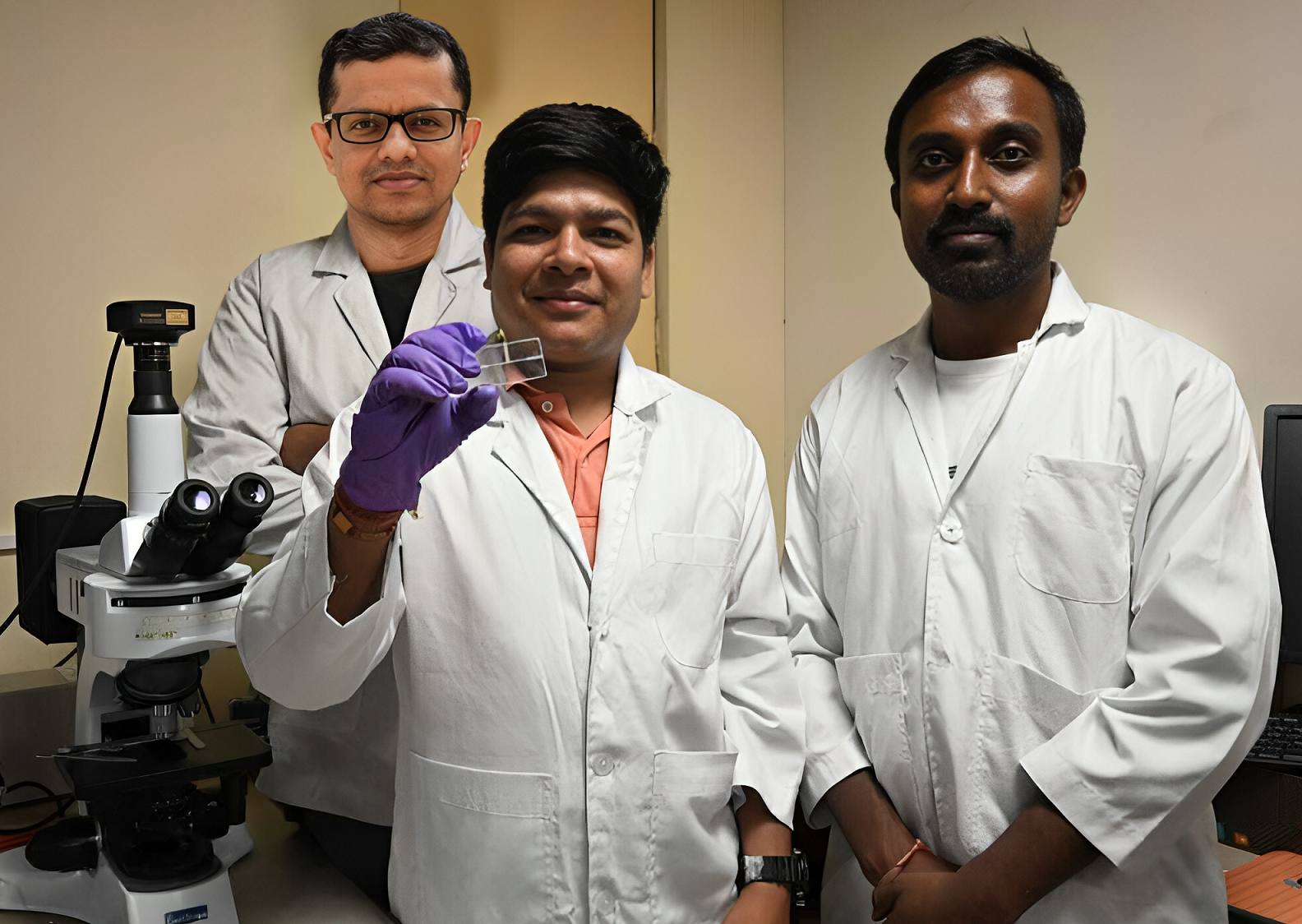IIT Guwahati Researchers Use Microfluidics to Study Root Nutrient Absorption
Publish Date:29-07-2024
IIT Guwahati Researchers Use Microfluidics to Study Root Nutrient Absorption
Ø Researchers used microfluidics to show that optimizing nutrient flow enhances root growth and nitrogen uptake, leading to improved crop yields.
Ø These findings offer valuable insights for advancing hydroponic systems and soil-less agriculture.
Video: https://youtu.be/wfpebtwlEZ0
GUWAHATI, 29th July 2024: Indian Institute of Technology Guwahati researchers have developed a portable, cost-effective microfluidic system designed to replicate soil-like conditions. This system has demonstrated that optimizing nutrient flow can improve root growth and nitrogen uptake, leading to enhanced crop yields.
Prof. Pranab Kumar Mondal, Associate Professor in the Department of Mechanical Engineering and an associate faculty in the School of Agro and Rural Technology at IIT Guwahati, and his team leveraged microfluidics to gain insights into how the primary root emerging from a seed absorbs nutrients from the soil. Their innovative use of microfluidic technology to analyze root behavior holds the potential to significantly enhance crop management and boost agricultural yields by optimizing nutrient delivery and root development in practical farming applications. Their research work has been supported by the Science and Engineering Research Board (SERB/ANRF), Govt. of India.
The team's findings have been published in the prestigious journal, Labon a Chip, published by The Royal Society of Chemistry, in a paper co-authored by Mr. Kaushal Agarwal, Dr. Sumit Kumar Mehta, and Prof. Pranab Kumar Mondal. The work has also been accepted to be featured as a cover art of the upcoming issue of the journal.
The primary root of a germinating seed serves as the plant's anchor, crucial for absorbing water and nutrients. This root must navigate various soil conditions during early growth, a critical phase for plant survival. Factors such as nutrient supply, pH levels, soil composition, aeration, and temperature significantly influence root development. However, studying root dynamics has been challenging due to the limitations of traditional experimental setups, which often require large containers and complex handling.
Microfluidics—the study of fluid flow in micrometer-sized structures—has revolutionized research in cell studies by enabling precise control and characterization of fluid dynamics at small scales. Existing microdevices primarily focus on phenomena like root-bacteria interactions, hormonal signaling, and pollen tube growth, with limited exploration into real-time plant root dynamics. Specifically, the impact of mechanical stimuli from nutrient flow on root growth and thigmomorphogenesis (the response of plants to mechanical stress) has not been extensively studied.
To address these challenges, Prof. Mondal and his team investigated the high-yielding mustard variety, Pusa Jai Kisan, known for its effective root diameter in the micrometer range. Their goal was to understand how different nutrient flow conditions influence root growth and nitrogen uptake during the critical post-germination stages.
Speaking about the research, Dr. Pranab K. Mondal said, “Our study provides new insights into plant root dynamics through the use of microfluidic devices. We validated our setup’s design and findings by simulating nutrient flow, measuring nitrogen uptake, and analyzing the effects of nutrient uptake and fluid pressure on root cells. This research enhances our understanding of how mechanical stimuli and nutrient uptake interact, with practical implications for agriculture.”
The researchers found that increasing the flow rate of the nutrient medium enhanced root length and nitrogen uptake up to an optimal rate. Beyond this point, excessive flow-induced stress reduced root length. Notably, roots exposed to flow conditions consistently performed better than those in no-flow conditions due to superior nitrogen uptake. This research highlights that carefully managed nutrient flow induces significant morphological changes in the root, promoting plant growth.
Looking ahead, the team plans to explore the molecular mechanisms underlying flow-induced changes in root growth. Understanding these cellular and molecular processes could lead to the development of more resilient hydroponic systems and support soil-less crop production.


























































